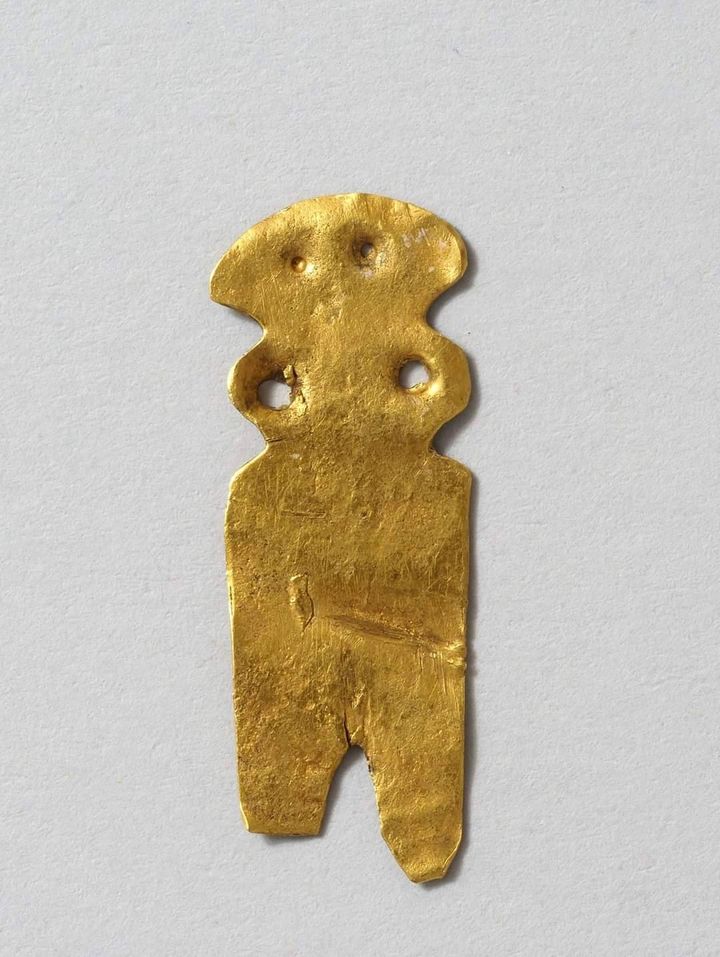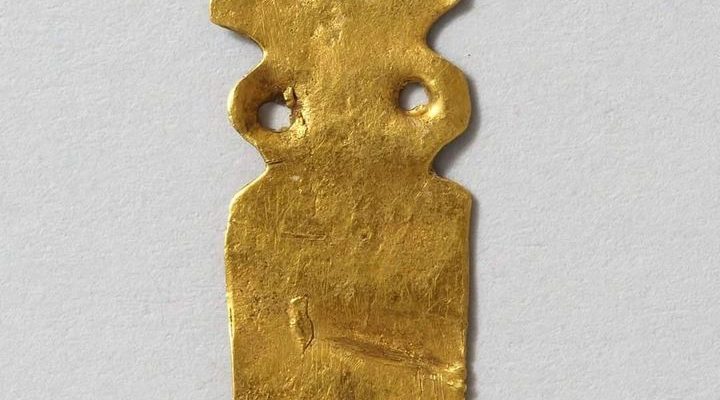In the small village of Kushla dere, nestled near the breathtaking beauty of Kosharitsa in Bulgaria, an incredible discovery was made. Deep within a tell, archaeologists unearthed a treasure that would captivate the world – a gold anthropomorphic figure. Dated to the late Chalcolithic period, the second half of the 5th millennium BC, this find was an extraordinary testament to the dawn of gold metallurgy.

The gold figurine, with its anthropomorphic features, held an air of mystery and intrigue. A representation of a schematic female figure, it possessed a simplistic yet enchanting allure. Marked by indentations for eyes, its bent arms were positioned along the body, while the legs were separated in the lower part. Much like other figurines made from bone and marble, this golden goddess depicted a stylized representation of the Mother Goddess herself.

One could only wonder about the significance of this precious artifact. Perhaps it was a symbol of fertility, a divine connection to the sacred feminine energy. Or maybe it held protective properties, meant to ward off evil and bring blessings to its wearer. The possibilities were as endless as the imagination.
Careful examination revealed that the figurine had holes pierced at the folded arms, suggesting it may have been worn as an amulet, either hung around the neck or sewn onto clothing. The golden goddess would have been cherished and revered, a tangible link to the spiritual realm. It was a testament to the beliefs and rituals of the ancient people who once inhabited this land.
This remarkable find belonged to a time when the world was just beginning to grasp the art of gold metallurgy. It was an era of exploration, where the boundaries of human ingenuity were being pushed further than ever before. The discovery and study of the Varna Chalcolithic necropolis had shed light on the earliest forms of gold craftsmanship, and now, this golden figurine added another layer to the story.

As news of the gold anthropomorphic figure spread, scholars and enthusiasts from all corners of the globe flocked to Kushla dere. They marveled at its exquisite craftsmanship, pondered its symbolism, and tried to unravel the secrets it held. The golden goddess became a beacon of fascination, drawing people into the rich tapestry of history.

And so, the golden anthropomorphic figure from Kushla dere stands as a testament to the wonders of the past. A relic of a time long gone, it reminds us of the intricate artistry and spiritual beliefs that shaped the lives of our ancestors. It is a treasure that transcends time, connecting us to the ancient world and igniting our curiosity for the mysteries that lie beneath the surface of our own existence.



